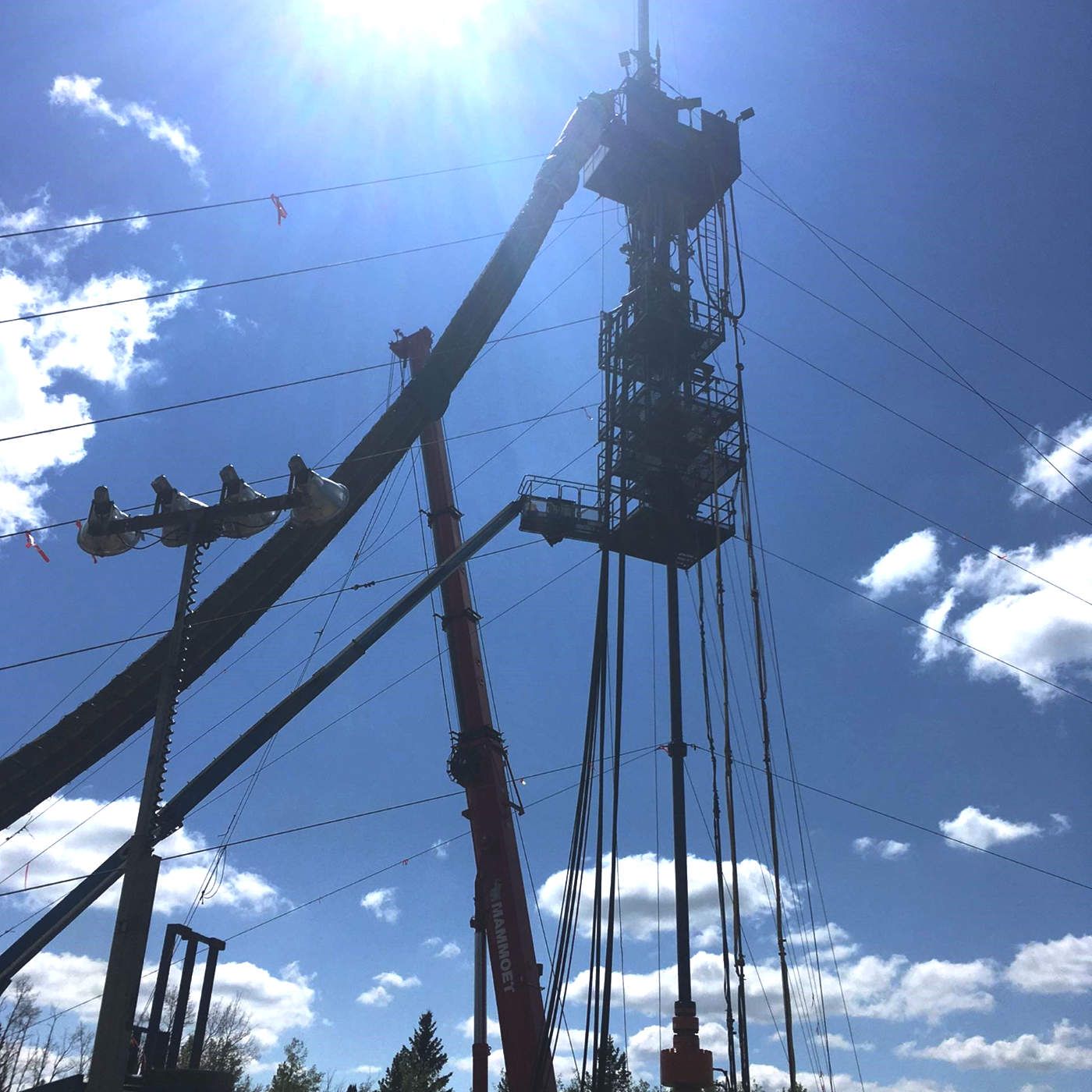
DURATION
22 days of 24hr operations
THE SITUATION
One of the customer’s top producing wells in the Foothills of Alberta since the early 1980’s began to have a leak of the permanent packer, allowing sour gas (23%) to migrate into the annulus. To avoid an expensive workover, the customer decided to spot a proprietary chemical to seal the packer. This sealant held a pressure test of 5mpa, which was suffice where as the bhp was depleted from original 45mpa to 3.5mpa.
The provincial Regulatory Board then requested a pressure test on the tubing string (5.5inch vamm). A slickline unit was mobilized and a plug was ran into the tailpipe below the packer. During pressure testing, the plug failed and launched into the profile in the bottom of the tailpipe. It was subsequently decided to perforate the tailpipe and resume production whereas there had been no communication with the annulus. The tailpipe was perforated but no inflow was observed. N2 was used to pressure up and attempt a feed rate, but with no success. A coil tubing unit was mobilized to attempt to fish the plug. After numerous attempts to fish the plug were unsuccessful, coil was demobilized.
THE SOLUTION
Piston Well Services was contacted to develop a proposal. The customer’s Reservoir personnel had decided that killing the well was not an option, feeling that the formation would not recover.
The well had a heater string and capillary line for chemical injection as well as an SSSV. Piston devised a plan to mobilized an E-Line unit to set 2 permanent plugs in the bottom of the permanent packer. Piston’s 285k unit was then installed with a 300k substructure and 11” primary BOP and work window. The completion string was retrieved in HWO mode and the well was secured once the completion was out of the hole. The unit was rigged up to 115ft in order to swallow the fish.
The first fishing run was a washover run. The customer assumed that the slips could be cut off the packer milling dry, so a 3-½ IF SS95 string was used as well as custom-built inconnell floats to handle the H2S content. Once the washpipe was 10m above the packer, the well was pressured up to 5mpa and milling began but with limited success. The washpipe became stuck numerous times, but the customer decided that jarring free would now be attempted. Washpipe was therefore to pooh and a spear was made up. The spear was run in the hole and set into the packer. A combination of bumping and jarring began. Working the jars up to 30dan over string. After 16 hours of jarring, it was decided to release the spear and pooh. Washpipe was made up again and run in the well.
Once the washpipe was 10m above the packer, nitrogen was rigged in and circulated @100scm, with 1m3 gel pills pumped every 15min. To assist in cutting removal, flowback testers took all returns to a p tank, the slips on the packer were milled off successfully and the workstring was snubbed out of the hole. The spear was made up again and the packer was retrieved after 1 hour of jarring.
Once the packer was removed a cleanout run was performed with a junk mill, jar, 3-1/8 drill collars, 30jts of l80 tubing with torque rings, then cross-over to 3-½ IF to surface. The liner ID was successfully milled out, removing scale from perfs. Circulation was performed with the same N2 and gel pills as used for the washover run. Once the cleanout was finished, the string was pooh and the unit rigged down to the 11 inch primary bops. E-line was then rigged in to wireline set a new packer. The snubbing unit was then released to the Completions department, and a workover rig ran the completion string under dead well conditions.






